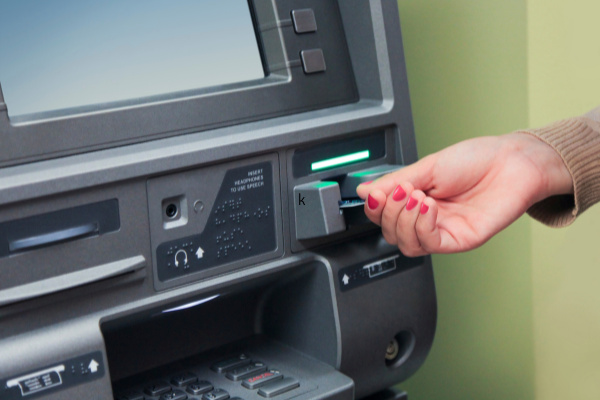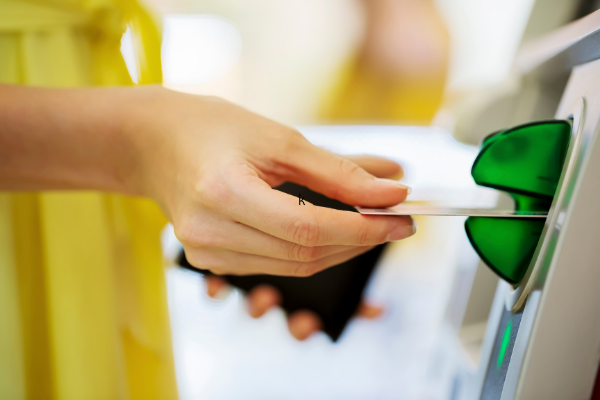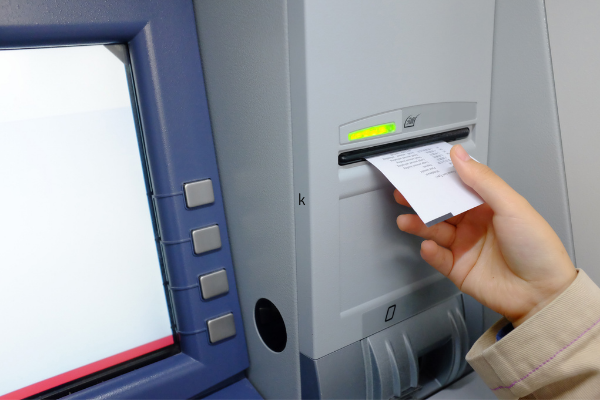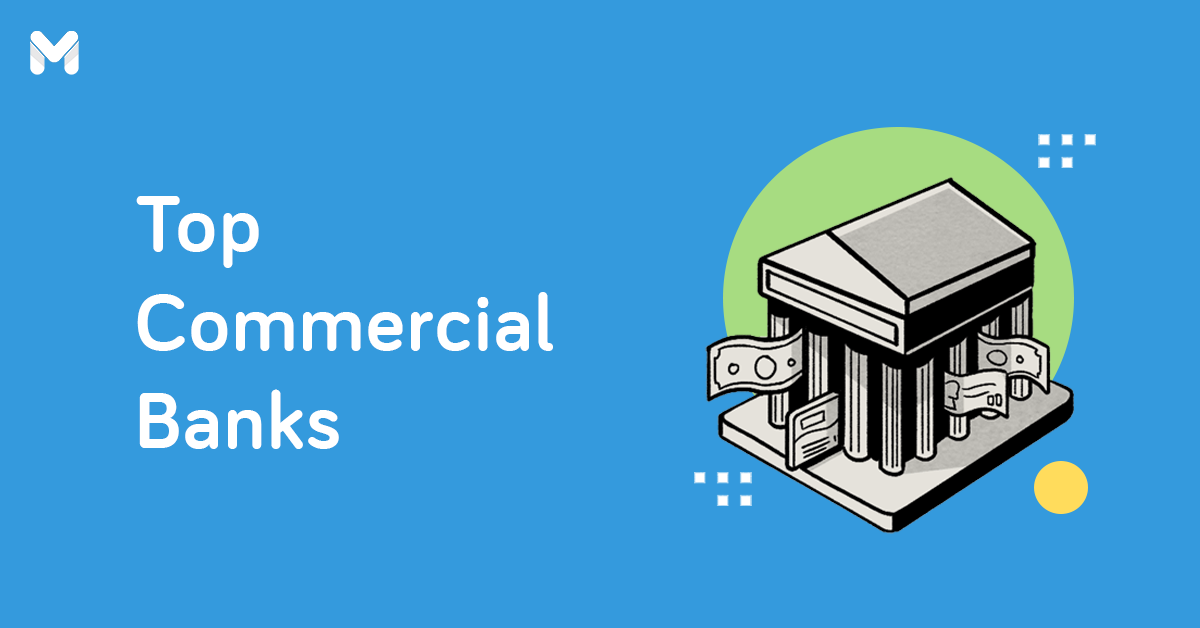Every day, millions of Filipinos use ATMs to access their savings and checking accounts. With a debit or ATM card, account holders can withdraw money, check their account balance, and transfer money. However, these transactions can be costly if you don't know the ATM fees in the Philippines.
ATM fees vary from bank to bank. Charges differ for every transaction. You also pay more when you withdraw or check your balance using a different bank’s ATM.
To help you learn more about ATM fees in the Philippines and how they can affect you financially, here are a few things to note.
What is an ATM?
An automated teller machine or ATM is an electronic banking outlet that offers quick self-service options to cardholders. Electronic banking allows customers to complete transactions without going to the bank. ATMs are convenient as you don’t have to wait in line at the bank to withdraw funds or know how much money you have in your account.
There are millions of ATMs in the Philippines and in the world. In fact, in 2020, more than 5.1 million ATMs were in operation around the world.[1]
Electronic Banking in the Philippines

Before we discuss ATM withdrawal fees in the Philippines, let’s identify first the networks that provide online facilities to banking corporations and debit cardholders in the Philippines. At present, there are three major bank consortia, namely BancNet, Megalink, and Expressnet.
BancNet
BancNet is the largest electronic banking network in the country with 124 members and more than 22,000 ATMs and 400,000 POS terminals nationwide.[2]
Founded in 1990, the company is the exclusive gateway of UnionPay, allowing access to nearly 1 billion ATM cardholders from China. Apart from providing services in the Philippines, BancNet also links with international card networks like Diners Club, Discover Card, KFTC, JCB, Mastercard, and VISA.
Read more: What Banks are Open on Weekends? Here's a Guide for Your Weekend Banking Needs
Megalink
Before merging with BancNet in 2015, Megalink was the biggest electronic banking network in the Philippines, handling more than 795,000 transactions per day from over 13 million cardholders. Founded by Equitable Banking Corporation in 1989, Megalink continues to operate as a partner of BancNet.
Expressnet
Expressnet may not be the largest bank consortium in the country, but it’s one of the most accessed, thanks to one of its members, BPI Family Savings Bank. Despite its popularity and success, Expressnet merged with BancNet in 2016.
Megalink and Expressnet remain separate entities regardless of their partnership with BancNet. All of these electronic banking networks perform under different agencies, which explains the non-uniform ATM service fees in the Philippines.
Read more: 25 Top Commercial Banks in the Philippines

Acquirer-Based ATM Fee Charging (ABFC)
Acquirer-based ATM Fee Charging[3] is a system of imposing fees on the use of an ATM by the bank or the electronic banking network. In the Philippines, ABFC is set by the Bangko Sentral ng Pilipinas, allowing those that invest in the machines to impose fees for transactions.
What are the Conditions Set Under the ABFC?
- The use of ATMs from the cardholder’s bank should be free of charge, while the use of ATMs from different banks will incur fees.
- Cardholders can choose to transact at any ATM terminal of their choice which offers reliable service and low fees.
- Upon implementation of the ABCF in April 2021, ATM withdrawal fees are set at ₱10 to ₱18, while ATM balance inquiry fees fall between ₱0 to ₱2.50.
Why Do Banks Need to Adopt the ABCF Model?

The ABCF model lets banks display the transaction fees on the ATM screen or through signages near the ATM terminals. Second, the ABCF aims to reasonably compensate ATM owners for incurred costs so that more terminals will be put up in other areas, including remote and rural locations. Lastly, the ABCF works to expand the Philippine ATM system as banks compete with each other in providing the lowest fees and most reliable services.
ATM Fees in the Philippines 2023
Avoid unwanted charges when using an ATM. Refer to this list of local ATM transaction fees and other related service charges.
ATM Balance Inquiry Fees
Requesting a balance inquiry on your own bank’s ATMs is free of charge. However, there’s a minimal fee ranging from ₱1 to ₱2 when doing it at other banks’ ATMs.
| Bank Name | Balance Inquiry Fee |
|---|---|
| BPI | ₱1.50 |
| China Bank | ₱2 |
| HSBC | Free |
| Landbank | ₱1 |
| Maybank | ₱2 |
| Metrobank | ₱2 |
| PNB | ₱2 |
| PSBank | ₱1 |
| RCBC | ₱0 to ₱2 |
| Security Bank | ₱2 |
| UCPB | ₱2 |
| UnionBank | ₱2 |
ATM Withdrawal Fees (When Using a Different ATM)
Withdrawal transactions done at your banks’ respective ATMs come at no cost, which is why it’s good to know where your bank’s nearest ATMs are located.
The withdrawal fees from other banks can be substantial, especially if you make several withdrawals in a day. Here’s what you’ll see on your transaction receipts after making a withdrawal at a different bank’s ATM.
| Bank Name | Withdrawal Fee |
|---|---|
| BPI | ₱18 |
| China Bank | ₱16 |
| HSBC | Free |
| Landbank | ₱10 |
| Maybank | ₱16 |
| Metrobank | ₱18 |
| PNB | ₱15 |
| PSBank | ₱10 |
| RCBC | ₱18 |
| Security Bank | ₱15 |
| UCPB | ₱12 |
| UnionBank | ₱12 |
Intrabank Transfer Fees (Same Bank)
Intrabank transfers mean transferring an amount to another person who has an account with the same bank. The majority of banks still offer this service free of charge.
| Bank Name | Intrabank Transfer Fee |
|---|---|
| BPI | ₱10 |
| China Bank | Free |
| HSBC | Free |
| Landbank | ₱10 |
| Maybank | Free |
| Metrobank | Free |
| PNB | Free |
| PSBank | Free |
| RCBC | Free |
| Security Bank | ₱25 |
| UCPB | ₱25 |
| UnionBank | Free |
Interbank Transfer Fees (Different Banks)
An interbank transfer is done when you transfer money from one bank to another. Most banks charge ₱25 for this.
| Bank Name | Interbank Transfer Fee |
|---|---|
| BPI | ₱25 |
| China Bank | ₱25 |
| HSBC | ₱25 |
| Landbank | ₱25 |
| Maybank | ₱25 |
| Metrobank | ₱25 |
| PNB | ₱25 |
| PS Bank | ₱25 |
| RCBC | ₱27.50 |
| Security Bank | ₱25 |
| UCPB | ₱25 |
| UnionBank | ₱25 |
Read more:
- How to Use PESONet Transfer Service: Guide for Consumers and Businesses
- InstaPay Philippines: What Is It and How Can I Use It?
Below Maintaining Balance Charges
Banks in the country may impose a fee on accounts that have fallen below the Required Monthly Average Daily Balance (MADB) for at least two consecutive months. HSBC and UnionBank have the highest monthly penalty fees.
| Bank Name | Below Maintaining Balance Charge |
|---|---|
| BPI | ₱300 |
| China Bank | ₱300 |
| HSBC | ₱1,000 |
| Landbank | ₱200 |
| Maybank | ₱500 |
| Metrobank | ₱300 |
| PNB | ₱350 |
| PSBank | ₱500 |
| RCBC | ₱500 |
| Security Bank | ₱300 |
| UCPB | ₱500 |
| UnionBank | ₱1,000 |
Read more: 16 Savings Accounts with No Maintaining Balance
Dormancy Fees
According to the Bangko Sentral ng Pilipinas (BSP), banks can only charge a dormancy fee of up to ₱30 per month[4] on deposit accounts that have been inactive for five years. Additionally, banks can only charge this transaction fee if there are no deposits or withdrawals done for five years, or if the account balance is below MADB.
ATM Withdrawal Limit in the Philippines
To provide a more holistic understanding of ATM services in the Philippines, here’s a list of ATM maximum withdrawals of some of the major banks in the country. If you don’t know the common ATM withdrawal limit in the Philippines, this can be a handy guide the next time you need to make a maximum withdrawal.
| Bank Name | ATM Withdrawal Limit |
|---|---|
| BPI | ₱100,000 |
| China Bank | ₱50,000 |
| HSBC | ₱100,000 |
| Landbank | ₱50,000 |
| Maybank | ₱50,000 |
| Metrobank | ₱50,000 |
| PNB | ₱50,000 |
| PSBank | ₱30,000 |
| RCBC | ₱50,000 |
| Security Bank | ₱50,000 |
| UCPB | ₱20,000 |
| UnionBank | ₱20,000 |
How Do You Save on ATM Fees in the Philippines?
With the increase in ATM fees in the Philippines due to the implementation of the ABFC, cardholders should find ways to minimize their expenses when doing transactions via ATMs.
1. Plan Your Withdrawals and Balance Inquiries

Balance inquiries and withdrawals are the most common transactions done through ATMs. You can minimize charges against your account if you plan your transactions. Schedule your withdrawals twice each month to avoid long queues and unplanned ATM transactions.
2. Consider a Bank with a Wide ATM Network
Apply for an account at a bank with a wide ATM network to avoid spending on fees when withdrawing from another bank’s ATM. Check which banks have more ATMs available near your residence or place of work. Take note of banks with available machines in grocery stores, malls, and shops you frequently visit.
3. Make a List of Your Bank’s ATM Locations Near You
Download your bank’s mobile app and access your account through its website to save time, effort, and money. Through digital banking, you can quickly view your account balance, transactions, and other account information in just a few taps. Just make sure to protect your passwords and other login details to avoid fraudulent transactions.
4. Open an Account in Several Banks, If Possible
If you can and if your budget permits, open a few more accounts with different banks. If your primary bank’s ATM can’t accommodate withdrawals at the moment, you can use your funds from other banks and withdraw at their ATMs.
5. Make Bigger Withdrawals
Instead of withdrawing money for one week’s budget, why not withdraw an amount to fund your expenses for two weeks or more? Save yourself several trips to the bank while also saving on ATM transaction fees.
6. Keep Your Withdrawal Receipts

ATM withdrawal receipts usually indicate how much money is left in your account. Keep these receipts to serve as your basis for your current balance. Also, these receipts serve as proof of your transactions should your ATM withdrawals fail.
7. Avoid Paying with Cash
Cashless transactions are the preferred option these days. You can use QR codes or even your debit cards to pay for groceries, bills, and other essentials.
8. Consider Purchasing Goods Online
With online purchases, you don’t need cash, and you can just stay at home while shopping. List down your shopping needs and categorize them into online and in-store purchases. This way, you’ll have a good idea of how much cash you need to withdraw on your next trip to the ATM.
FAQs on ATM Fees in the Philippines
1. What is the 05si service charge?
For BPI clients, the 05SI service charge is what you get charged when you use non-BPI ATMs. The charge of ₱15 is earmarked per withdrawal but will be debited only at the end of the month. You can find this in your transaction history and is listed as a withdrawal with EN/ML.
2. What is the minimum withdrawal amount in ATMs in the Philippines?
Most banks have a minimum withdrawal amount of ₱100. But BDO has a minimum withdrawal amount of ₱200 per transaction.
3. Which ATM has the lowest fee?
Generally, your own bank's ATMs offer the lowest—sometimes even zero—fees. As much as possible, complete your transactions with your own bank.
Final Thoughts
ATM fees in the Philippines may seem cheap, but multiple interbank transactions can eventually hurt your savings. Still, ATM fees are cheaper compared to banks’ deposit fees when you deposit to a branch outside of Metro Manila. They’re also cheaper than over-the-counter withdrawal fees for certain savings accounts.
Be smart when checking your account balance and making withdrawals. Opt for your bank’s ATMs first if you need to withdraw at the mall or when you’re traveling. It's safer and can save you money as well.

Sources:
- [1] ATMs (Automated Teller Machines): What Are They? (Forbes, 2021)
- [2] Philippines ATM switch operator BancNet modernises billing and settlement systems with FSS (Finextra, October 2021)
- [3]Acquirer-based ATM Fee Charging (ABFC) (Bangko Sentral ng Pilipinas, 2021)
- [4] BSP sets fine for inactive deposit accounts (Inquirer, 2016)









